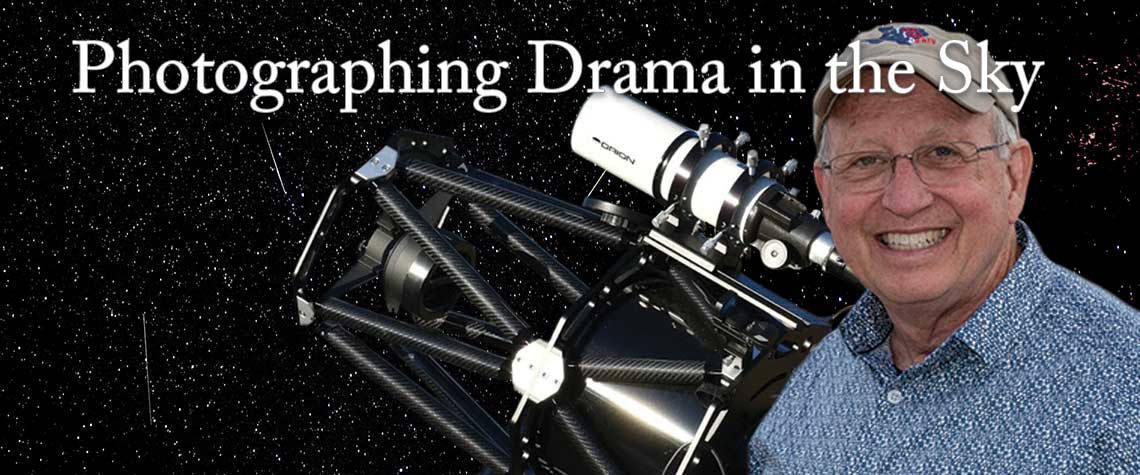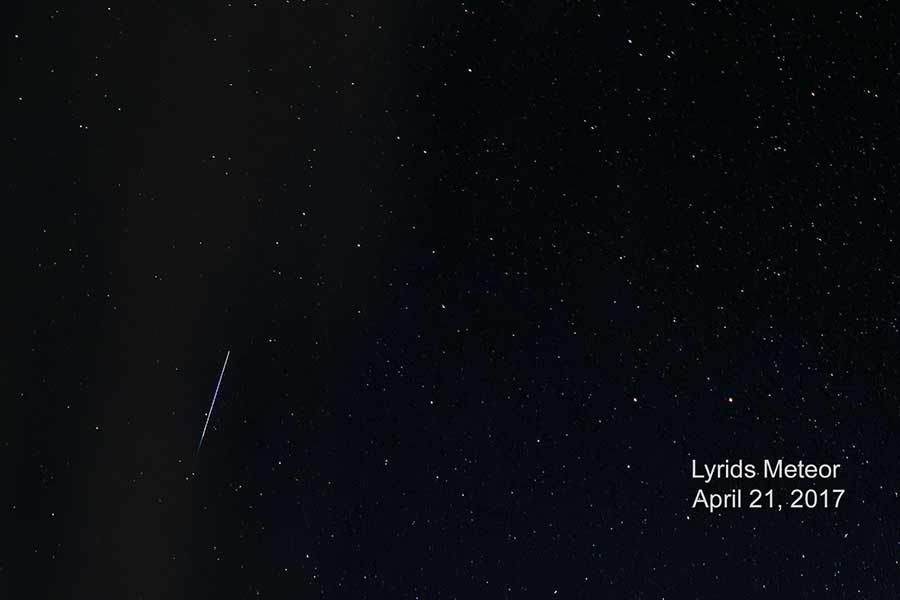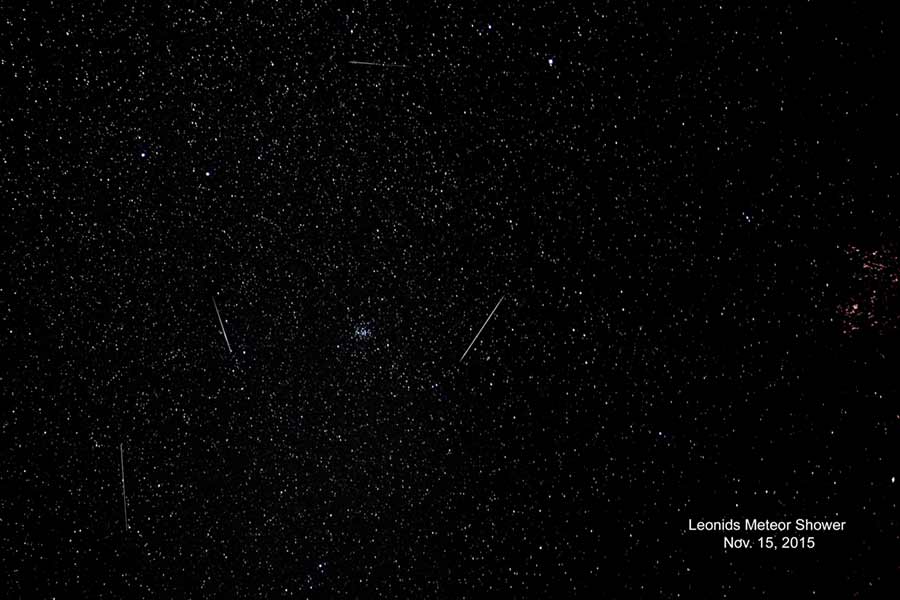Page 4


Astrophotography Lesson - Photographing Meteors and Meteor Showers
Article and Photos by Randall Light, M.D.
Email: randylightmd@yahoo.com
Website: www.randalllight.com
Meteors and meteor showers are a dramatic part of astronomy. I have vivid memories of staying up late outside as a teenager to watch a very active meteor shower. It impressed me so much that one of the first things I wanted to photograph in the night sky was a meteor shower. With the advent of DSLRs it has become much easier to do this. The most important feature of the DSLR in photographing meteors is the immediate feedback it provides by displaying an image just taken in the field. This allows camera adjustments to be made to improve the images until the settings are appropriate. For meteor shower photography this means setting the camera to obtain an image with a histogram shifted one third of the way to the right from the left side of the histogram.
Location and Timing
As always, astrophotography is best done in a location with clear dark skies and good weather. Moonlight will significantly decrease the yield of useful images of meteors. Often the highest meteor frequency is in the early morning hours between 2 and 4 a.m. as the earth rotates to face the debris that becomes meteors. It is best to configure the camera settings in advance. It is much easier to assemble equipment, make mechanical adjustments, and adjust the camera at home before beginning the actual imaging session. Practice focusing at home.
Equipment
This is the equipment list and procedures I use for meteor photography:
- DSLR camera with full manual adjustment. Be able to adjust shutter speed, aperture, ISO, white balance, and set to manual focus using live view zoomed in on a bright star. Use ISO 1600 or less to reduce noise. Do a custom white balance of the sky if your camera has this feature. Raw image format allows more flexibility in post processing the images. Turn off unnecessary settings such as long exposure and high ISO noise reduction. Enable exposure delay if available to reduce vibration caused by mirror motion.
- A fast wide angle lens at or near maximum aperture. A prime lens (fixed focal length) in the 14 to 24 mm focal length range on a full frame DSLR with an aperture of f/1.4 to f/2.8 is highly desirable. On a crop format DSLR that would be a lens in the 10 to 20 mm range. Remember that the smaller the focal ratio the larger the opening to admit light. A lens set to f/1.4 admit four times as much light as a lens set to f/2.8 aperture. I typically use a 20mm f/1.8 lens at f/2.0. Focus the lens on a bright star using live view with as much magnification as possible. Consider taping the focus ring to prevent movement.
- Extra charged camera batteries or an external AC power supply to take pictures over several hours.
- A tripod heavy enough to solidly support the camera and lens even if there are gusts of wind. I usually add a sandbag to the bottom of the center column. Use a tripod head that will allow the camera to be pointed straight up at the zenith where the sky is the darkest.
- An intervalometer to control the exposure time and the total number of images. Have it take images for as long as possible without creating star trails. A very conservative estimate of that exposure time is T=400/focal length. For a 20 mm lens that is T = 400/20 = 20 seconds. Alternately, set it to create star trails per my previous article and include the meteor with the star trails.
- Dew heater, power for it, and a towel. Watch for dew formation as the temperature approaches the dew point. Alternately, a chemical hand warmer attached to the lens may be adequate to prevent dew formation.
- Clothing to be comfortable with cooler temperatures.
- Insecticide
- A zero gravity chair or similar to watch the meteor shower while your camera is taking pictures.
This type setup will produce a fixed foreground and a background that moves with the earth's rotation during the imaging session. A fixed background centered on a constellation or the Milky Way can be achieved by mounting the camera and lens on an equatorial mount centered on the desired background. This approach makes it possible to create a collage in Photoshop or similar software of the best meteors of the night on the fixed background.
Meteor Shower Schedule
There are a number of opportunities to photograph meteor showers throughout the year. During the remainder of 2018 there are opportunities each month. The Orionids meteor shower will peak October 21-22. The Leonids meteor shower will peak November 17-18, and the Geminids meteor shower will peak December 21-22. A 2018 meteor shower calendar can be found at the American Meteor Society website. Please share any meteor photos you take with the club.
Click the thumbnail to see a larger photo.


